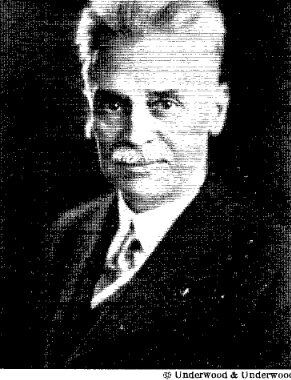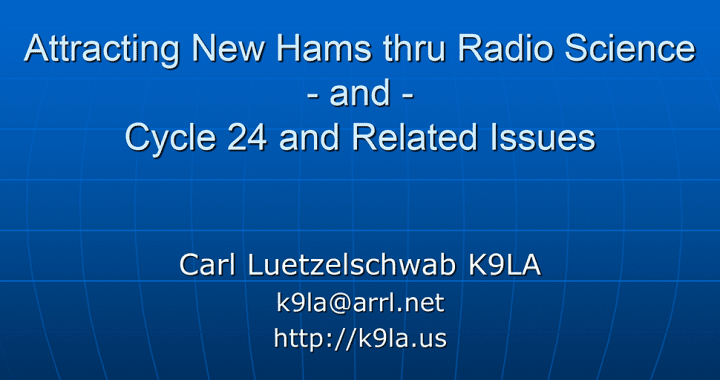By Jim Stafford, W4QO Coverage of the lives of our ARRL president and vice president from the pages of April 1936 QST magazine. It will have some things you “did not know”. More …
Continue readingArticles
100+ Things To Do in Ham Radio
Have fun with Ham Radio doing these things Action or Activity Comment 2M SSB or CW Working the “weak signal” bands can be fun! 6M – what a great band! Operate the “magic” band on SSB or FM 10M – This band can really jump Join 10-10 international and KEEP THE BAND OPEN! 75 Meter Roundtables Sometime called the groan and moan nets! 160M – Get on the band The Gentleman’s Band – May need a different antenna AM – Operate this “old time” mode Join the AM net each Wednesday AMSAT – Join and work the universe Operate one […]
Continue readingEMCAR
by Bob Freeman, KI4SBL SK EMCAR is the Enhanced Machine Controller-based Antenna Range. This set of codes and documentation is intended to assist the interested party in setting up an automated antenna measurement capability (i.e. Antenna Range) using non-specialized hardware and free software. more …
Continue readingIt’s Midnight. Do You Know Where Your Radios Are?
By Tim, WK4U Article 5 in a series of 5 While it’s midnight here in Atlanta, it’s only 9pm on the West coast. Many folks are still awake in North America. Some stations are still broadcasting our way. Maybe favoring the “left” side if possible. It’s an interesting time. Not too many people to broadcast in their evening hours right now. Use any gray line program to see for yourself. Many broadcasts are either domestic, North American, or mostly towards Eastern Africa and the Middle East right now. So Tim, if I’m up this late, what are some of the […]
Continue readingIt’s Getting Dark for Shortwave in Atlanta! – 8pm
By Tim, WK4U Article 4 in a series of 5 The gray line, also known as the terminator (I’ll be baaack) is practically here. Do you know we can use the gray line to communicate (or hear other stations) much easier than normal? When it’s dusk here in Atlanta (in August), you can make contact with stations in Southern Greenland, Northern Scandinavia, Afghanistan, Pakistan and Western India quite easily. Load any gray line program on your computer to see for yourself. By the way, if you’re an aspiring SWL or ham DX’er, you’ll use the gray line often. Sometimes twice […]
Continue readingWelcome to the WORST Time for Short Wave Listening!
By Tim Lemmon, WK4U Article 3 in a series of 5 Yep, 4pm is probably the worst time to hear broadcast stations on short wave. Even worse than lunch time! Some of the North American pirate radio stations start broadcasting about this time. More common a little later in the evening. Especially on weekends and holidays. 6925 USB is still best, but a somewhat active secondary frequency is 6850 (USB or AM). Try them both! Right now (at 4pm local) the grayline curve is hovering over Sweeden, Southern England, France and Spain – headed our way. We still have 4-5 […]
Continue readingIs There DX at Lunch Time? — You Betcha!
By Tim Lemmon, WK4U Article 2 in a series of 5 People ask, is it possible to hear anything interesting on short wave radio at lunchtime? Does short wave radio even work during the daytime? Actually yes and yes. Lunch time is about the worst time to hear programming material on short wave radio. Why? Because world-wide broadcasters are beaming their signals to parts of the world that are currently in their evening hours. The thought is more people listen at home after work. They don’t listen as much during the day. Especially at lunch time. But can we hear […]
Continue readingSo You Think Sunspots Are LOW, Listen to This …
By Tim Lemmon, WK4U Article 1 in a series of 5 In the morning, after you eat breakfast, how far can you communicate on 40 meters? How far can you HEAR signals on 7 MHz from Atlanta? 500 miles? 1000 miles?? California maybe??? Probably not that far – right? What if I said you CAN hear signals from thousands of miles away on 7 MHz. Would you believe me? Tune your radio to 7575 in the AM mode (8-10am Atlanta time) and you’ll hear the Voice Of America (VOA) broadcasting to the Far East in their evening hours from … […]
Continue readingWhat NFARL Accomplished in 2014
By Neil, N4FN and the Executive Committee Satellite SIG – 10 to 12 folks participated – built handheld satellite antennas CW SIG – 17 folks participated – several learned CW – SIG met 3 times a week CW on repeater + CW tests. GA QSO Party – About 25 members participated and we won gavel for 5th time! Field Day – many hard working leaders – 256 participants, #1 nationally – highest NFARL score ever – every bonus point available was earned this year for the first time – 12,300 points! 5th place nationally out of 316 entries – 1st place in SE Division. […]
Continue readingAttracting New Hams through Radio Science
by Carl Luetzelschwab, K9LA A presentation to HamJam 2014. Click here to download a PDF file containing Carl’s slides.
Continue reading
